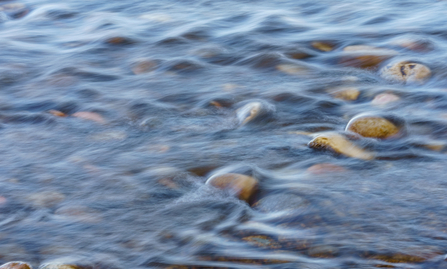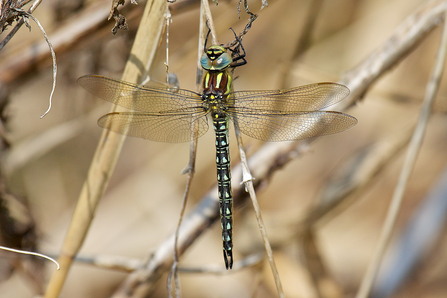What is river restoration and why are we doing it?
Throughout Britain's industrial period our rivers were straightened, deepened, and changed in ways that suited the area at that time. This could have been to move water out of an area, or to create fast-flowing channels of water if it was needed for a water mill, for example. As a result, many waterways flow in a way they wouldn't naturally without human intervention. These changes often caused larger flooding issues downstream.
River restoration work aims to 're-wiggle' our rivers, adding bends and length to the rivers, slowing the flow and helping our rivers to hold more water. It also helps to relieve flooding issues by creating wetland areas and ponds outside of the river which hold excess water, benefitting people and wildlife. A river that is wiggly is longer, and when connected to a floodplain has a larger water storage capacity. River restoration also helps to create a mixture of slower and faster areas of moving water, replicating a natural river with a variety of flow types.
Donate to the Wilder Waters appeal
Over the last 100 years, the UK has lost 90% of its wetland habitats, with more than one in ten freshwater and wetland creatures now at risk of extinction. Will you help us restore these vital lifelines and fund work for rivers and wetlands?
In-river and out-of-river restoration work
There are several key features of river restoration work which you may see in and around our rivers. The section below helps to explain what these features are, what they look like, and why we use them.
In river: Berms and pinned woody debris
Berms help to create a bend or arch in a river, to re-wiggle the river and mimic a natural flow pattern. These are usually created using large pieces of wood leftover from tree works, or brash.
Pinned woody debris are large tree trunks or branches which are pinned into place within the river to help deflect the flow of water, mimicking where trees and branches would naturally wedge themselves into a riverbank.
Both of these techniques help to create areas of faster or slower moving water. Faster water helps to clean the river bed, improving its oxygen content, whilst slower areas drop the silt, creating sediment for plants.
In river: Riffles
Riffles are shallow areas of a river created using pebbles or gravel. They help to speed up the flow of the river and the pebbles and gravel help to filter the water, creating clean areas for fish to breed.

Off river: Scrapes
A scrape is a shallow pond. Differing from a traditional pond, a scrape may not hold water all year round. They often have muddy edges and while they may not appear wet during the summer, they usually remain damp and never fully dry out. Left to vegetate naturally they are an important habitat, supporting plant species lost from the wider landscape. They are great locations for insects to breed throughout the spring.

©David Martin
